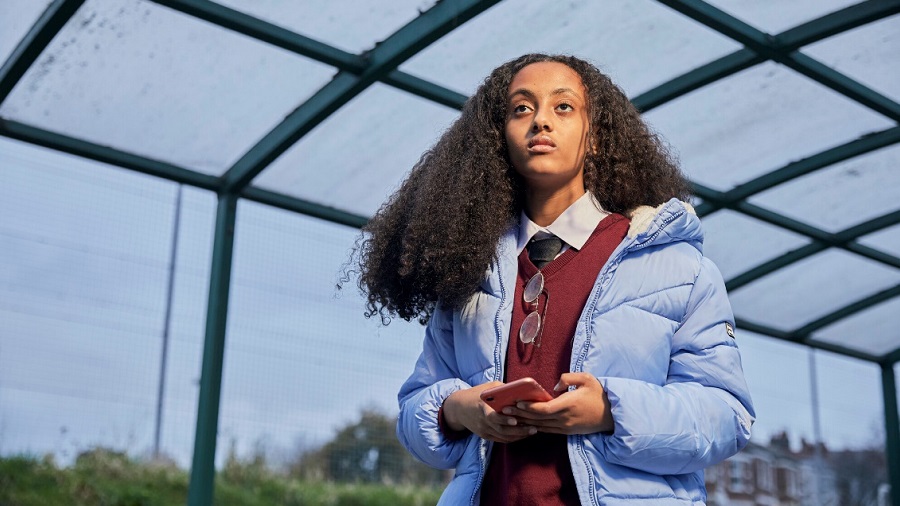- Why might my child have shared a nude image online?
At Childline we began to hear from children and young people who had shared nude images online. Sometimes this had been done in trust with a friend or someone they were in a relationship with. However, young people also tell us they have been coerced into sharing a nude image.
Many report feeling pressure to share and hoped that by doing so it would end contact with the other person. However, this is often not the case. Once an image has been shared it is out of the control of the child, and there is potential for the image to be shared further or used to threaten or blackmail. This can be a cause of worry and stress.
We launched Report Remove in June 2021 with the IWF, to help take down nude images and videos of children from the web and prevent any future uploads. This can help to reduce the child’s stress and worry about having an image or video shared. Childline can also give the child emotional support and advice to help them cope with their experience.
- My child has had a nude shared online, how can I help them get it taken down?
Report Remove can be accessed by visiting childline.org.uk/remove.
There are just three simple steps they need to follow:
- Follow the instructions to prove their age. If they’re 13 or older, they’ll be supported to prove their age using an age verification app called Yoti. They will need some ID for this.
- Log into or create a Childline account so they can receive updates on their report.
- Report and remove: share the image or video securely with the IWF, who will review it and work to have it removed if it breaks the law. They will give it a digital fingerprint to help spot the image across the internet and take it down. If the image or video has been shared on a public website, they should upload the URL.
- Who can use Report Remove?
Report Remove is for any child under the age of 18 in the UK. If the child is 13 or older, they will either need a passport, driving licence, residents permit or young Scot Card to prove their age. This is important because Report Remove uses laws relating to children to take down images.
- What will happen after my child has submitted a report using the tool?
Once a report has been submitted it will be reviewed by specially trained analysts at the Internet Watch Foundation (IWF). Childline never see the image or video. If the image or video meets all of the requirements for removal, IWF will create a digital footprint for it known as a hash. This is then shared with internet companies who use the hash to locate the image online and remove it. The hash is then stored by IWF and the internet companies so if the image or video is uploaded again, it is automatically taken down.
Giving the image or video a hash means that the image, video, or any other identifying information is not shared with the internet companies.
Childline will let the young person know the outcome of their report and provide further support where needed. And they’re always welcome to speak to a counsellor about how they feel, whether online at childline.org.uk, or via our free confidential helpline on 0800 1111.
- How can I talk to my child about safe image sharing in an age-appropriate way?
It can be difficult for some parents/carers to have open discussions with their child around sharing nudes, but here are some tips from the NSPCC:
- If you have younger children start talking about the PANTS rule. This will set the foundations for talking about sharing nudes in the future.
- For older children, perhaps start by asking them about who they talk to online and what about. Look out for opportunities on TV shows and in the news to talk about what they would do if someone asked them to share a nude.
- Remind them that they don’t ever have to feel as if they need to say yes to anything that makes them uncomfortable.
- Help them understand the risks of sharing a nude online - that it can be easy to feel a loss of control over the image and that there’s no guarantee that the person they sent it to will not pass it on further. However, be careful to make sure your child feels able to come to you if they find themselves in that situation.
- Where can I get support if my child has shared an image?
Supporting your child can be a lot to cope with, so it’s important to have support for yourself too. Think about who this might be – perhaps a trusted friend or family member. The NSPCC Helpline is available too.
- What should I do if I suspect my child has been talking to an adult? Who should I report that to?
If your child has been talking to an adult online and this has been sexual in nature, support is available. A great resource is the law enforcement agency, NCA-CEOP, (National Crime Agency - Child Exploitation and Online Protection).
The CEOP website offers information to children of different ages as well as for parents/carers and professionals working with children. It also offers a route to report a concern to the police.


